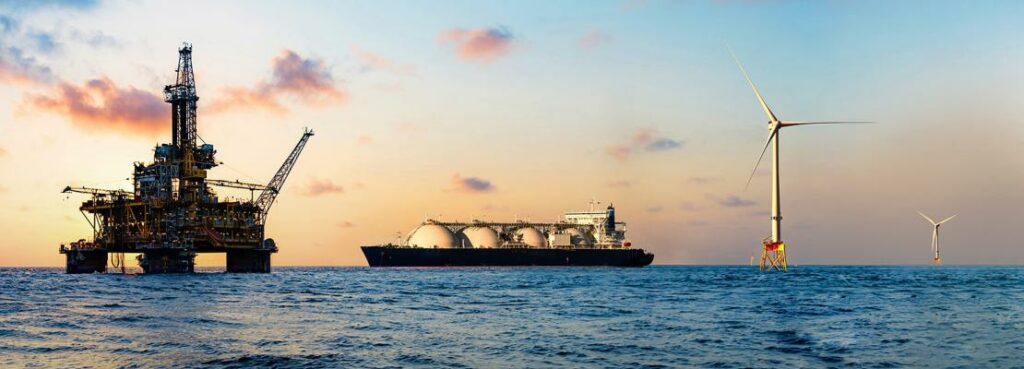Step on the gas, pretty please

The global energy show will go on regardless of the obstacles in its path and the challenges it faces worldwide on a specific and general level, such as the climate change conundrum and the current tariff tug-of-war challenges. The climate change woes primarily affect the future of fossil fuels, putting governments in a quandary over pouring further investment in oil and gas plays, given the rise in calls to pivot to renewables and clean energy sources of supply. Developments in 2024 hammered home the enduring nature of oil, gas, and liquefied natural gas (LNG) projects and the progress made in developing new ones and extending the lifetime of older ones. Once summer came to an end, the winter season, combined with a forecasted rise in demand for sources of energy supply driven by the heating season and anticipated population growth in the future, combined to stoke fears of energy shortages, prompting some countries and companies to take measures to ensure stable production of hydrocarbons not just during the winter months but also in the years to come. Those fighting to push the climate change agenda to the forefront of global energy policy considerations view such endeavors as attempts to roll back the energy transition progress and backpedal from the disclosed net-zero pledges. However, proponents of the oil and gas uptick argue that taking a step back is needed to look at all available tools and options to strengthen the security of the energy supply while also coming to grips with the remaining double whammy of affordability and sustainability challenges within the energy trilemma conundrum. Given the complexities interwoven in tackling climate woes alongside growing energy demand on region-specific and global levels, recent moves show that some have already put their foot down on attempts to accelerate fossil fuel phase-out by opting to advocate and engage in further hydrocarbon pursuits while also chasing the low-carbon and green shift in a bid to curb their greenhouse gas (GHG) footprint. Equinor‘s decision to pour billions into oil and gas over the next ten years is a case in point, which spotlights Norway’s current stand on future hydrocarbon search activities. ExxonMobil‘s stark warning against implementing oil and gas investment curtailment measures serves as another illustration of arguments used to promote the development of more hydrocarbons rather than less, as climate campaigners call for. Equinor, which is on a mission to bolster safety and emergency preparedness in the Barents Sea with Vår Energi, is bent on pursuing an energy investment pathway up to 2035 that opens the annual investment doors over the next ten years to $5.7 – $6.6 billion to be spent on fortifying Norway’s oil and gas production. This follows Norwegian Offshore Directorate’s calculations, which pointed out that more than $1.42 trillion (NOK 15 trillion) was in danger of being lost if the European country failed to take measures aimed at stepping up exploration of its remaining hydrocarbon resources while accelerating the deployment of emerging technology tools designed to raise the production bar. Those in favor of keeping oil and gas in the energy mix up to 2050 and even beyond are adamant that these power supply sources are needed to safeguard the global energy markets from price shocks and shortfalls, as confirmed by New Zealand’s government, which disclosed plans to reverse a ban on offshore oil and gas exploration last year alongside its intention to sort out LNG import-related regulatory hurdles. Eni brought more natural gas on stream by putting one of the wells into operation at an offshore field, which is described as Italy’s most important gas development, with the remaining wells to be tested and brought online later on. The Italian oil major has taken steps to make sure the project will reach carbon neutrality for Scope 1 and 2 emissions. With clearance in hand, Eni is now ready to begin the works required for the integrated development of two fields offshore Indonesia to establish a new production hub in the Kutei Basin while boosting its gas and LNG arsenal. Two Asian players, Asia Natural Gas & Energy Association (ANGEA) and the Korean Private LNG Industry Association, decided to pool resources to bolster natural gas development and look into LNG’s potential during the energy transition era. With energy transition and security of supply in mind, ANGEA and ASEAN Centre for Energy (ACE) decided to put their heads together and come up with ways to boost both in Southeast Asia, primarily with the help of LNG and CCUS. An analysis of the LNG market trends and expectations, provided by Awilco LNG, emphasized the fall in LNG vessels’ charter rates, which sank last year to a level not observed since 2020, however, the market activity was ramping up thanks to energy demand growth. The offshore energy world has changed a great deal over the past few years, leading to a shift in energy trade dynamics, spurring growth in the merger and acquisition (M&A) appetite, amid a far more pronounced focus on decarbonization moves, the rise of greener innovations, digitalization, AI initiatives, and other low-carbon and clean technologies, paving the way for a transition to a more sustainable energy future. The wave of offshore hydrocarbon discoveries in 2024 put the spotlight firmly on attempts to boost gas resources. However, this does not mean that oil is now out of the picture, as this is still the fuel that holds the biggest slice of the global energy mix. Last year, the Organization of the Petroleum Exporting Countries (OPEC) confirmed additional voluntary oil production cuts by OPEC+ countries, which were slated to be gradually phased out monthly from December 1st, 2024. The decision came a couple of months after Haitham Al Ghais, OPEC’s Secretary General, pointed out that oil was set to play a key role in the upcoming years and decades. As “peak oil demand is not on the horizon,” OPEC’s Secretary General noted that the progress made in renewables and EVs is “nowhere near close enough to replace 80% of the energy mix,” emphasizing how “the development of renewables and EVs requires some oil-related products. Their future expansion will add to oil demand.” Al Ghais is adamant about the need to “prioritize energy security, utilize all available energies, deliver energy affordability, enhance sustainability, reduce emissions and not limit our energy options in the face of expanding demand,” underscoring that “oil can deliver on all those fronts.” Things are now different as eight OPEC+ members – Saudi Arabia, Russia, Iraq, Kuwait, the UAE, Algeria, Kazakhstan, and Oman – disclosed their intention to begin increasing crude oil output starting from last month, reversing their 2.2 mbl/d voluntary output cuts over 18 months from April 2025 to September 2026. According to Rystad Energy, West Texas Intermediate (WTI) crude prices dipped into the low $60 per barrel range in the wake of President Donald Trump’s sweeping tariffs announced on April 2, 2025. While the subsequent April 9 move to freeze the new levies at 10% for most countries for the next 90 days helped WTI prices recoup some losses, the market remains “extremely volatile,” based on the energy intelligence player’s findings. The firm underlined: “Rystad Energy finds that additional corporate items, including higher hurdle rates, dividend payments and debt service costs, means that the ‘all-in’ corporate cash flow breakeven for many US oil players is closer to $62.50 WTI. If the recent price downturn is sustained, these price levels could threaten US oil production growth this year, as operators may be forced to cut back activity to maintain investor payouts.” Prices below this level present significant risks for U.S. production this year in Rystad’s view, as a downshift in the Permian could spell a significantly decelerated pace of growth in 2025. While the Trump administration has sought to lower prices and increase production, the company emphasizes that its trade policies have sent prices falling because of the potential for diminished demand. The corporate reality for public players means that the already modest growth could be at risk if WTI prices remain in the low $60s. “The business model embraced by US oil producers over the past several years becomes far more difficult to maintain with prices below this level. This means that some combination of near-term activity levels, investor payouts or inventory preservation will need to be sacrificed in order to defend margins. While different companies have different sensitivity to the above factors, activity and production will be threatened the most,” concluded Rystad. In the meantime, the pivot to gas and LNG continues to gain momentum with the share of gas in the world’s energy mix previously expected to climb to 30% by 2025, but still well below the share of oil, which was to dip slightly from around 40% to 37% this year, based on an analysis from OPEC. While the contribution from renewables is set to grow, the technology is still in its infancy, thus, the oil cartel is convinced that all other available resources need to be “accessed, enhanced and utilised to meet the energy needs of mankind and support sustainable development. Petroleum has a big role to play in this.” As a result, OPEC’s forecast urged full and timely investment in oil production capacity to meet the increase in demand, ensure exhausted reserves’ replacement, and enable oil-producing nations to have sufficient spare capacity available to cope with sudden, unexpected shortages in supply. Most importantly, the cartel recognized the burning desire for oil to be “cleaner, safer and more efficient than ever before, to meet the very high expectations.” In line with the dash for gas, Equinor and its partners – Petoro, Vår Energi, TotalEnergies – found a gas/condensate discovery last year while drilling a well in the Norwegian Sea with one of Transocean’s rigs. CNOOC also made a gas discovery, describing it as the first major exploration breakthrough in ultra-deepwater carbonate rocks offshore China. After the government put a dusky sea snake on the endangered list, some feared that the move would jeopardize a project, led by Australia’s Woodside Energy and valued at over $30 billion, to develop what was said to be the country’s largest untapped conventional gas resource, others openly seek to pull the plug on the project and shoot down attempts to bring it to life. One of the two bills introduced in the Victorian Parliament by Minister for Energy and Resources Lily D’Ambrosio and Minister for Planning Sonya Kilkenny was expected to bolster energy security by enabling gas to be stored in empty offshore gas reservoirs. The bill was going to become available for consultation in December 2024. Saipem’s multibillion-dollar deal with QatarEnergy’s QatarEnergy LNG is expected to help maintain natural gas production from the biggest field off the northern coast of Qatar, as it entails the engineering, procurement, fabrication, and installation of six platforms as well as approximately 100 km of corrosion resistance alloy rigid subsea pipelines of 28’’ and 24’’ diameter, 100 km of subsea composite cables, 150 km of fiber optic cables and several other facilities. While TotalEnergies commenced gas production from a field in southern Argentina, located 60 km off the coast of Tierra del Fuego, GASTRADE inked a five-year LNG supply deal with Venture Global LNG, which secures gas for markets in Central and Eastern Europe (CEE) thanks to LNG from the U.S. firm’s terminals in Louisiana. In addition, BP decided to move forward with the development of a project entailing offshore enhanced gas recovery (EGR) through carbon capture, utilization, and storage in Indonesia. Element NL, an association of 12 oil and gas companies with a permit to explore or extract natural gas, has set its cap on streamlining the permitting process, in collaboration with the Dutch Ministry of Climate and Green Growth and EBN, to step up the gas production game in the North Sea given the global uncertainty spurred by the ongoing tariff tug-of-war.



















